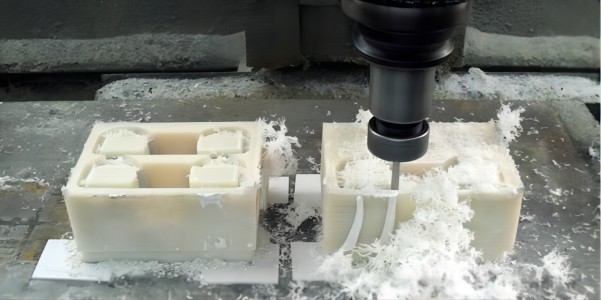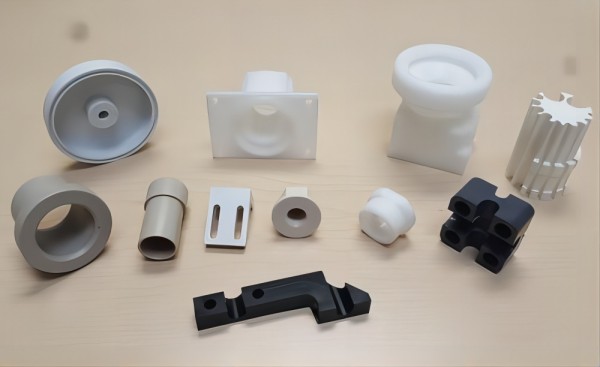
Privacy statement: Your privacy is very important to Us. Our company promises not to disclose your personal information to any external company with out your explicit permission.
CNC machining has traditionally been regarded as a machining method. However, modern industry demands ever-increasing precision from parts made of all possible materials. This is the reason for the development of CNC plastic machining technology. It now occupies a considerable place in high precision, small batch production and the manufacture of plastic parts for handicrafts.
Whether you need any plastic handbags or customized parts, fusion of complex components or finishing and polishing services for small production runs, WACKER offers advanced CNC handbags services as well as high-temperature and high-strength plastic machining materials.
Reasons for the popularity of plastic parts
Why is plastic so popular? Since the invention of industrial-grade polymers, the invasion of plastics in all branches of modern industry has been unstoppable. There are many reasons for this. I will list just three of the main reasons. Plastic parts are cheap, lightweight and durable. Let's talk about the first point here. Cheap means that it costs much less to make them than metal parts.
CNC Plastic Machining Methods
There are many ways to produce high precision plastic parts. Modern industrial grade plastics are cast, injection molded, printed or machined. The first three options are great for making parts with complex geometries with excellent surface finishes. But when you need to achieve tight tolerances or produce a mirror-like surface finish on virtually any type of part, there's nothing better than machining. About 80% of all plastic parts are CNC milled. This is the most widely used method for making parts without rotating axes. All the rest are usually opened on a lathe. To achieve an excellent surface finish, CNC-milled parts are polished or chemically treated.

Plastic Processing Tips
Machinery
First, let's clarify. There are no plastic CNC machines. Virtually all machines used to cut plastics are metalworking tools. Their precise rigidity and power output allow them to easily machine even hardened plastics. I should point out that woodworking machines are less rigid and therefore less effective
Machining tools
Choosing the best cutting tool for a plastic part is a complex task. The reason for this is that plastics, as well as composites, vary greatly in composition. Some plastics are reinforced with hard carbide particles or have additives that enhance flexibility, heat resistance or other parameters. All of these change the way the plastic reacts to machinery. Even the colorant of the material is important because, depending on its type, the hue may change during processing due to extensive heating.
Having said that, it is clear that the correct cutting tool geometry must be selected for the plastic part being machined. For example, a milling cutter is similar to an aluminum milling cutter with two flutes, however, the sharp edges have a sharper angle. The same can be said about drills. Their protagonist (120 degrees for metals) becomes only 60 degrees. Thus, the chips are smaller and can be removed more easily. However, you can not use this drill on metal. It will break in a few minutes.
Clamping of parts
When clamping plastic blocks, it is important to remember. Plastic is not metal. If the blank is clamped with too much force, it is easy to leave large marks on the surface. In fact, if too much force is applied, the part may break. If 100% marking is to be avoided, it is recommended that special shims made of a softer material be used between the fixture and the part. Another problem is the rigidity of the part. For example, if you are drilling a fairly large part (think of a laptop case). You need to pay close attention to the distance between the drilling position and the fixture. In the process, the drill will try to pull the part upward along its slot, and if the fixture is too far away, the drill will succeed. It will bend the part or may actually tear the part from the fixture.
Cutting Parameters
Let's look at the selection of a plastic cutting process using the example of CNC milling a plastic enclosure. The main problem you must watch out for is excessive friction and plastic deformation of the part, not cutting. To avoid the second problem, keep the cutter sharp at all times and if the material used is not strong enough, freeze it. Plastic hardens and becomes brittle at low temperatures.
To prevent chips from melting onto the CNC machined part, you need to keep the tool moving and prevent it from staying in one position for too long, remove the chips as soon as possible. The spindle speed must also be very fast at higher feed rates. An approximate estimate is about 3 times the aluminum feed speed with a corresponding cutting speed.
The role of plastics in CNC prototyping
Plastic machining services are closely related to CNC hand board making technology. Polymer materials are well suited for hand board fabrication and engineering verification. The reason for this is that plastics are practically easy to machine. If you don't have any heating or molding equipment, then fabricating parts out of CNC plastic blocks is a great way to get those handboards easily and quickly. You can use the same widely available equipment that you would use to work with metal, so there is a great deal of flexibility. Cutting speeds and feed rates will be faster, resulting in shorter lead times and the opportunity to test your product samples and get them to market faster than your competitors.

November 17, 2024
November 16, 2024
August 27, 2021
August 26, 2021
PEEK ball is a special type of ball made of polyether ether ketone (PEEK), which has excellent chemical stability, abrasion resistance, and high temperature resistance.PEEK ball is widely used in...
PVDF Application Areas Different models of PVDF products are suitable for different application scenarios. According to application fields, PVDF can be divided into conventional grade products and...
Application Performance Advantages of MC nylon MC nylon is a new type of engineering plastics, due to its outstanding comprehensive performance, so that its status in engineering plastics is rapidly...
Types of nylon: 1. Nylon - 6 (PA6) Nylon -6, also known as polyamide -6, that is, polycaprolactam. Translucent or opaque opalescent resin. 2. Nylon - 66 (PA66) Nylon-66, also known as polyamide-66,...
Email to this supplier
November 17, 2024
November 16, 2024
August 27, 2021
August 26, 2021

Privacy statement: Your privacy is very important to Us. Our company promises not to disclose your personal information to any external company with out your explicit permission.

Fill in more information so that we can get in touch with you faster
Privacy statement: Your privacy is very important to Us. Our company promises not to disclose your personal information to any external company with out your explicit permission.